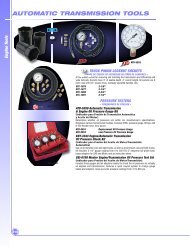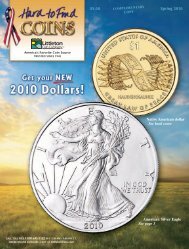SPORT FISH OF OHIO identification
SPORT FISH OF OHIO identification
SPORT FISH OF OHIO identification
Create successful ePaper yourself
Turn your PDF publications into a flip-book with our unique Google optimized e-Paper software.
o w n<br />
g e r m a n t r o u t<br />
t r o u t<br />
Salmo trutta<br />
32<br />
IDENTIFICATION: Color ranges from brown to gold<br />
on back with a cream to slate-colored belly. Have black,<br />
yellow, gray, or occasionally red spots surrounded by a<br />
white halo. The adipose fin between dorsal and caudal fin<br />
is prominent with spots. There are no spots on squarish<br />
tail or wavy markings on back region.<br />
<strong>FISH</strong>ING TIPS: Fishing is most successful in the fall<br />
through late spring, or during early and late hours during<br />
the summer. Brown trout are usually pursued with fly<br />
fishing equipment, with patterns that match local hatches<br />
or nymphs of caddisfly, stonefly, or mayfly. Fly patterns of<br />
ants, crickets, grasshoppers, and “wooly buggers” also<br />
produce nice catches. Live bait such as nightcrawlers,<br />
leeches, crayfish, minnows, and maggots can also be<br />
productive.<br />
FOOD: Small fish and insects<br />
ADULT SIZE: Normally 10-13 inches; maximum of 29<br />
inches<br />
SPAWNING: Brown trout do not naturally reproduce<br />
in Ohio. Division of Wildlife hatcheries rear brown<br />
trout for roughly one year before stocking them.<br />
RANGE AND HABITAT: Native to Europe. The<br />
Ohio Division of Wildlife currently stocks brown trout<br />
in selected streams. Prefered habitat includes coldwater<br />
streams with boulders, cobble, logs, rootwads, and<br />
overhead cover.
















